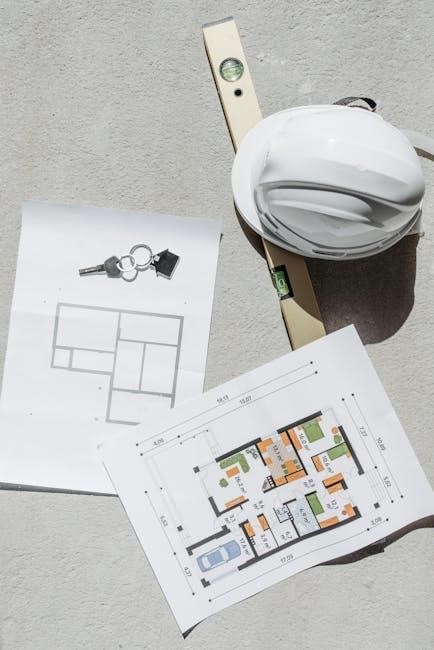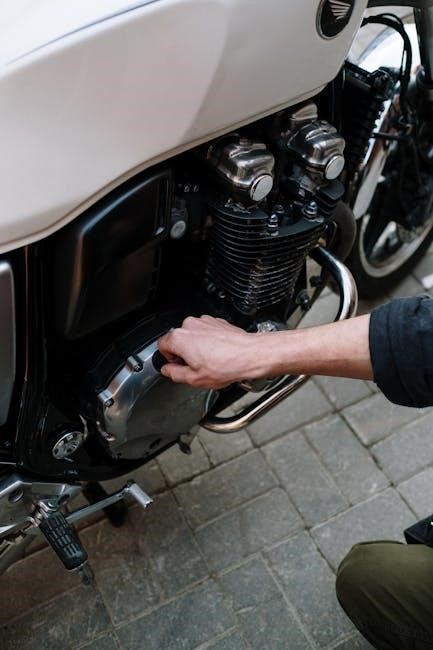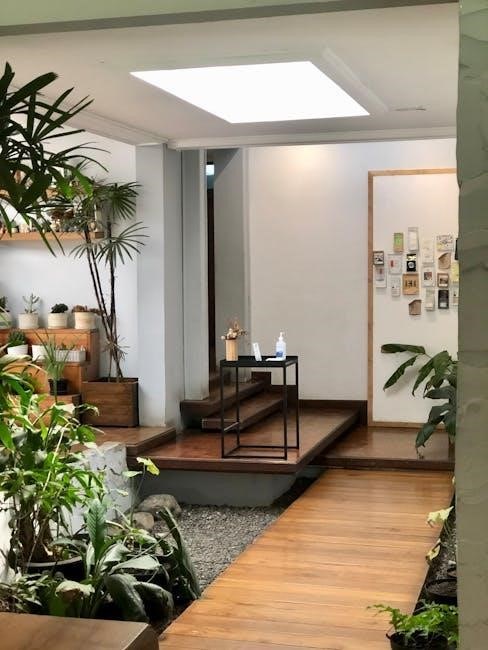garibaldi’s menu pdf
Garibaldi’s Menu PDF: A Comprehensive Overview (Updated 11/28/2025)
Garibaldi’s Menu PDF is a detailed document showcasing all restaurant offerings, including dish descriptions, ingredients, and sizes.
Garibaldi’s represents a distinguished dining experience, steeped in culinary tradition and inspired by the legacy of Giuseppe Garibaldi, a pivotal figure in Italian unification. The restaurant, notably the one at the InterContinental San Diego, has recently undergone a transformation, unveiling a fresh concept, aesthetic, and, crucially, a revitalized menu led by Executive Chef Franck.
Beyond its San Diego location, Garibaldi’s extends its presence to Arlington Heights and Hoffman Estates, Illinois, offering a diverse selection including pizzas, cheesesteaks, and Italian beef. The core philosophy centers on delivering authentic Italian flavors with a modern touch. The Menu PDF serves as a gateway to this culinary journey, providing a comprehensive overview of available dishes. It’s a testament to Garibaldi’s commitment to quality and a convenient resource for planning a memorable meal, reflecting both its historical roots and contemporary innovation.
What is the Garibaldi’s Menu PDF?

The Garibaldi’s Menu PDF is a digital compilation of the restaurant’s complete food and beverage offerings, designed for easy access and convenient meal planning. It’s more than just a list of dishes; it’s a detailed guide encompassing descriptions of each item, including key ingredients and preparation methods. This document allows diners to explore the full scope of Garibaldi’s culinary creativity before visiting.
The PDF format ensures compatibility across various devices, enabling effortless browsing. It showcases appetizers, main courses – like the Arrosto di Maiale and Saltimbocca alla Romana – and other specialties. It’s a valuable resource for understanding portion sizes and making informed choices. Downloading the latest version guarantees access to the most current menu information, including any updates or changes, ensuring a seamless dining experience.
Availability and Accessing the PDF Menu
The Garibaldi’s Menu PDF is readily available online for convenient access, allowing prospective diners to peruse the offerings before their visit. While a direct link wasn’t explicitly provided in the source material, it’s reasonable to expect the PDF is hosted on the official Garibaldi’s restaurant website, or potentially linked through the InterContinental San Diego’s site, given the restaurant’s location.
Furthermore, menus for the Arlington Heights and Hoffman Estates, IL locations are also available, suggesting separate PDF versions may exist for each establishment. Searching online for “Garibaldi menu PDF” will likely yield results. The Garibaldi Bar Menu is also available for viewing online. Downloading the PDF provides a comprehensive overview of all culinary options, from pizzas and salads to signature main courses, facilitating informed dining decisions.

Menu Sections & Key Offerings
Garibaldi’s menu boasts diverse sections, including appetizers, pizzas, salads, and main courses like roasted pork belly, veal scallopini, and chicken parmesan.
Appetizers & Starters
Garibaldi’s appetizer selection initiates the dining experience with a range of flavorful options designed to stimulate the palate. While specific details aren’t extensively outlined in the provided text, the menu PDF comprehensively covers these initial offerings. Diners can anticipate a curated selection intended to complement the subsequent courses.
These starters likely include traditional Italian fare, potentially featuring fresh seafood – referencing the broader seafood variety available (canestrello, cannolicchio, etc.). Expect choices that showcase the restaurant’s commitment to quality ingredients and authentic preparation methods. The PDF format ensures easy browsing of these tempting beginnings, allowing patrons to plan their meal effectively. The appetizers serve as a prelude to the robust main courses and signature dishes Garibaldi’s is known for, setting the stage for a memorable culinary journey.

Pizza Selection
Garibaldi’s menu PDF features a dedicated pizza selection, offering a classic Italian staple alongside its more refined dishes. While the provided information doesn’t detail specific pizza varieties, it confirms their inclusion within the comprehensive menu offerings. Patrons seeking a casual yet satisfying option will find a range of pizzas available for review within the downloadable PDF.
Considering Garibaldi’s broader Italian culinary focus, the pizza selection likely incorporates traditional toppings and authentic preparation techniques. The menu in Arlington Heights & Hoffman Estates, IL, also includes pizza, suggesting a consistent offering across locations. The PDF format allows diners to easily peruse the available pizzas, checking for crust styles, sauce options, and ingredient combinations before ordering. This section caters to a wider audience, providing a familiar and enjoyable choice alongside the restaurant’s signature entrees.
Salads & Light Bites
Garibaldi’s Menu PDF encompasses a selection of salads and lighter fare, providing options for those seeking a less substantial meal or a refreshing starter. Though specific salad names aren’t detailed in the available information, the PDF’s comprehensive nature suggests a variety of choices beyond the main courses. These lighter options likely complement the richer Italian dishes, offering a balanced dining experience.
These selections cater to diners preferring a healthier or smaller portion size. The inclusion of salads and light bites demonstrates Garibaldi’s commitment to accommodating diverse preferences. Reviewing the PDF allows customers to explore available greens, dressings, and accompanying ingredients. These options provide a welcome contrast to the heartier entrees, ensuring a satisfying meal for all palates. Expect fresh ingredients and classic Italian-inspired flavors within this section of the menu.

Main Course Highlights
Garibaldi’s Menu PDF features signature dishes like Roasted Pork Belly (Arrosto di Maiale), Veal Scallopini (Saltimbocca), and Chicken Parmesan (Petto di Pollo).

Roasted Pork Belly (Arrosto di Maiale)
Garibaldi’s Menu PDF proudly presents Arrosto di Maiale, a truly exceptional main course. This dish features seasoned and expertly roasted pork belly, promising a delightful culinary experience for discerning palates. The preparation focuses on achieving perfectly crispy skin while maintaining a succulent and tender interior.
The Arrosto di Maiale is not simply roasted; it’s accompanied by a vibrant chilli bourbon sauce, adding a touch of sweetness and spice that beautifully complements the richness of the pork. Alongside, you’ll find roasted carrots, providing a subtle sweetness and earthy counterpoint to the savory flavors.
This offering, detailed within the Garibaldi’s Menu PDF, is priced at $38 and represents a commitment to quality ingredients and traditional Italian cooking techniques. It’s a standout selection for those seeking a hearty and flavorful main course option.
Veal Scallopini (Saltimbocca alla Romana)
Garibaldi’s Menu PDF showcases the classic Italian dish, Saltimbocca alla Romana, a testament to refined culinary artistry. This dish features pan-fried veal scallopini, delicately layered with prosciutto and fragrant sage. The preparation emphasizes achieving a tender and flavorful result, highlighting the quality of the veal.
The Saltimbocca alla Romana is finished in a light white wine sauce, enhancing the savory notes of the prosciutto and the herbaceous aroma of the sage. This dish is a harmonious blend of textures and tastes, offering a truly authentic Italian experience.
Priced at $34 as detailed in the Garibaldi’s Menu PDF, this offering is served with perfectly cooked potatoes, completing a satisfying and elegant main course. It’s a popular choice for diners seeking a traditional and flavorful Italian meal.
Chicken Parmesan (Petto di Pollo alla Parmigiana)
Garibaldi’s Menu PDF proudly features Petto di Pollo alla Parmigiana, a beloved Italian-American classic, expertly prepared with a focus on quality and flavor. This dish begins with a crisp, golden-crumbed chicken fillet, ensuring a delightful textural contrast with each bite.

The chicken is then lavishly topped with a rich, vibrant tomato sauce, simmered to perfection and bursting with fresh, Italian flavors. Generous amounts of melted mozzarella cheese complete the dish, creating a comforting and satisfying experience.
Available for $33, as indicated in the Garibaldi’s Menu PDF, this Chicken Parmesan is a hearty and flavorful main course. It’s a popular selection for those seeking a familiar yet exceptionally well-executed Italian favorite, promising a truly enjoyable dining experience.

Seafood Options
Garibaldi’s Menu PDF details a diverse seafood selection, including canestrello, cannolicchio, capasanta, cozza, ostrica, patella, vongola, and tellina, offering fresh choices.
Seafood Variety (Canestrello, Cannolicchio, etc.)
Garibaldi’s Menu PDF proudly presents an extensive array of seafood options, catering to diverse palates and preferences. Diners can explore a curated selection featuring delicacies like canestrello, known for its delicate flavor, and cannolicchio, a prized shellfish. The menu further boasts capasanta (scallops), succulent cozza (mussels), and fresh ostrica (oysters), alongside the unique textures of patella and the briny goodness of vongola (clams).
Additionally, tellina clams are featured, completing a comprehensive offering of the freshest catches. Each seafood item is prepared with meticulous attention to detail, highlighting its natural flavors and ensuring a memorable dining experience; The PDF menu provides detailed descriptions, allowing guests to make informed choices and savor the best of the sea at Garibaldi’s.

Additional Menu Information
Garibaldi’s Menu PDF includes details on locations in San Diego, Arlington Heights, and Hoffman Estates, IL, plus tasting menus and bar options.
Garibaldi ⎼ InterContinental San Diego: New Concept & Menu
Garibaldi, situated on the third floor of the InterContinental San Diego, is experiencing a significant transformation with a newly unveiled concept, aesthetic, and menu. Led by Executive Chef Franck Deletang, this revamped dining destination promises a fresh culinary experience overlooking the beautiful San Diego Bay.
The updated Garibaldi’s Menu PDF reflects this evolution, showcasing innovative dishes alongside classic Italian flavors. Diners can anticipate a refined selection of appetizers, pasta, and main courses, all crafted with high-quality ingredients and a focus on seasonal produce. The menu aims to provide a sophisticated yet approachable dining experience, catering to both hotel guests and local residents seeking an exceptional meal. The PDF version conveniently allows patrons to preview the offerings before their visit, ensuring a delightful and informed dining choice.
Menu Options in Arlington Heights & Hoffman Estates, IL
Garibaldi’s locations in Arlington Heights and Hoffman Estates, Illinois, offer a distinct menu experience compared to the San Diego restaurant, readily available as a PDF download. This menu focuses on casual American fare with an Italian influence, providing a diverse selection for a wider audience.
The Garibaldi’s Menu PDF for these Illinois locations highlights popular items like pizza, cheesesteaks, and Italian beef sandwiches. Patrons can also enjoy chicken sandwiches, tenders, and a variety of other comforting options. This PDF serves as a convenient tool for planning takeout or dine-in orders, showcasing pricing and detailed descriptions of each item. It’s a family-friendly menu, offering something for everyone, and easily accessible for quick reference before visiting either Illinois location.
Garibaldi Bar Menu – Overview
The Garibaldi Bar Menu, available for online viewing as a PDF, presents a focused selection complementing the full restaurant experience. While details are concise, the PDF provides a glimpse into the bar’s offerings, likely featuring a curated list of beverages and potentially a limited selection of accompanying snacks or small plates.
This Garibaldi’s Menu PDF is intended for patrons seeking a quicker, more casual experience within the Garibaldi space. It’s a streamlined version of the comprehensive restaurant menu, prioritizing drink options and perhaps lighter fare. Accessing this PDF allows guests to preview the bar’s offerings before settling in, ensuring a satisfying visit. Expect to find details on cocktails, wines, beers, and potentially appetizers designed for enjoying at the bar.
Tasting Menus & Group Dining Requirements
The Garibaldi’s Menu PDF indicates specific requirements for tasting menus and larger groups. Notably, full participation from every guest at the table is required when opting for a tasting menu. This ensures a cohesive culinary journey for all diners, allowing the chef to present the intended progression of flavors and dishes.
For group dining, the PDF likely outlines reservation policies, potential pre-ordering requirements, and any associated minimum spending commitments. These policies are in place to guarantee a smooth and enjoyable experience for both the group and the restaurant. Reviewing the Garibaldi’s Menu PDF beforehand is crucial for planning a successful group outing, clarifying expectations and streamlining the dining process.
Menu Updates & Changes
The Garibaldi’s Menu PDF, updated as of November 28, 2025, serves as a dynamic resource reflecting the restaurant’s evolving culinary offerings. It’s important to note that menus are subject to change based on seasonal ingredient availability and the chef’s creative inspiration. Regularly checking the latest version of the PDF ensures diners have access to the most current information regarding dishes, pricing, and any special promotions.

Garibaldi, at the InterContinental San Diego, recently unveiled a new concept and menu, signifying a significant update. The PDF will reflect these changes, showcasing the refreshed culinary direction. Staying informed through the Garibaldi’s Menu PDF guarantees an accurate preview of the dining experience, avoiding any discrepancies between outdated information and the current offerings.
















































































